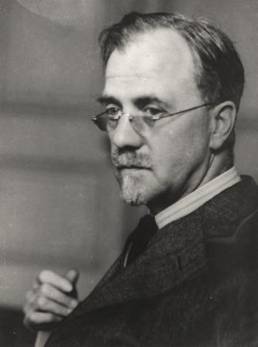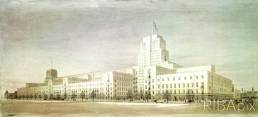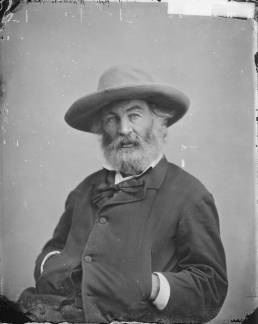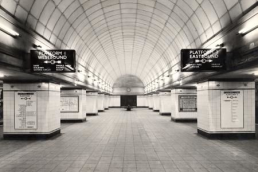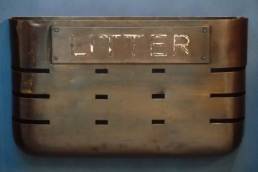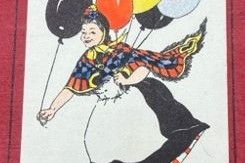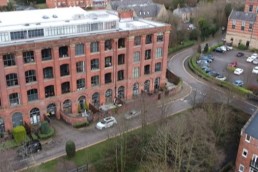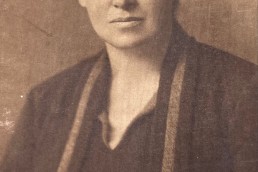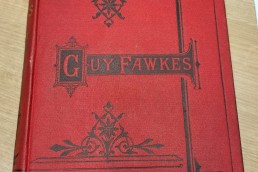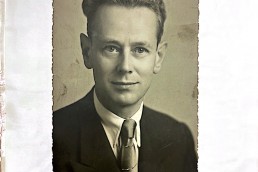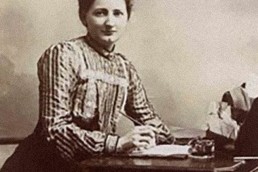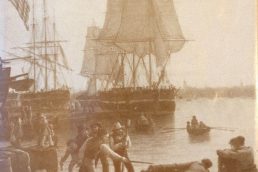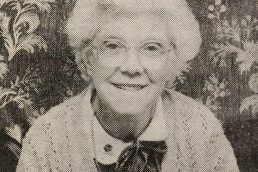This blog post examines the life and career of Dr Charles Henry Holden, a Bolton-born award-winning architect, (1875-1960). The details provided below are informed by research located from various sources such as: London Transport Museum; Joshua Abbot's Modernism in Metro-Land, a site dedicated to the Modernist and Art-Deco buildings of London (some of which Holden designed), and the Royal Institute of British Architects, a site dedicated to exploring great architects, together with various other online sources (see bibliography, below).
It is hard to believe that a lad from Bolton had anything to do with the construction and design of The London Underground and beyond, and it is even harder to digest that the same lad from Great Lever helped to shape the image and appearance of our capital city, as shown here.
Dr Charles Henry Holden was a Bolton-born English architect who played a major role in shaping the appearance of London, and designed many of London’s Underground stations during the 1920s and 1930s. He was also responsible for designing buildings such as Bristol Central Library, London’s Underground Electric Railways Company at 55 Broadway, and the University of London’s Senate House, among other iconic buildings as demonstrated in Geoff Clement’s blog, here. He was also responsible for the design of many war cemeteries in Belgium and northern France for the Imperial War Graves Commission.
While working and training in Bolton and Manchester, Holden befriended James William Wallace, architect and founding member of the Bolton Whitmanites of ‘Eagle Street College’ (‘Charles Holden’, 2021). Wallace and Dr John Johnston (co-founder of the Whitmanites) began corresponding with Whitman in 1887 (Larry D. Griffin, n.d.). Holden’s introduction to the writing of Whitman was to be hugely influential on his work and career (Eitan Karol, 2008, p.6). In 1905 Holden wrote an essay titled “If Whitman had been an Architect”, published in the Architectural Review, in which he called for a new approach to architectural design:
“Often I hear of the glory of the architecture of ancient Greece; of the proud Romans; of sombre Egypt; the praise of vast Byzantium and lofty Middle Ages, too, I hear. But of the glory of the architecture of the Modern I never hear. Come, you Modern Buildings, come! Throw off your mantle of deceits; your cornices, pilasters, mouldings, swags and scrolls; behind them all, behind your dignified proportions, your picturesque groupings, your arts and crafts prettinesses and exaggerated techniques; behind them all hides the one I love” (qtd in ‘Charles Holden’, 2021).
Clearly, Holden’s architectural appeal stylistically echoes the rallying poetics of Whitman: “Poets to come! orators, singers, musicians to come! […] Arouse! for you must justify me.” (‘Poets to come’, Whitman, 1881, p. 18).
Holden’s early buildings, therefore, were influenced by the Arts and Crafts Movements, but for most of his career he championed an unadorned style based on simplified forms and massing that was free of what he considered to be unnecessary decorative detailing. And although Holden was not without his critics, his architecture is widely appreciated. He was awarded the Royal Institute of British Architects’ (RIBA’S) Royal Gold Medal for architecture in 1936 and was appointed a Royal Designer for Industry in 1943. His station designs for London Underground became the corporation’s standard design influencing designs by all architects working for the organisation in the 1930s. Many of his buildings have been granted ‘listed building’ status, protecting them from unapproved alteration. He also declined the offer of a knighthood, not once, but twice!
Above is an image of Gants Hill Underground station, Central line, London, c, 1954. It displays the interior view of the lower concourse area showing illuminated platform indicators and line information is displayed on the tiled wall columns. Note: Built in 1947, this was one of Charles Holden’s last works known as the “Moscow Hall”. This lower concourse design was inspired by his visit to the Moscow Metro, as explained by the London Transport Museum.
Above we also see an image of a wall-mounted bronze bin from Highgate Underground station, London, c. 1938. It is a classic example of the elegant but functional design developed by Bolton-born architect, Charles Holden.
Charles Henry Holden died on the 1st May 1960. His body was cremated at Enfield crematorium and his ashes were spread in the garden of the Friends’ Meeting House in Hertford. A memorial was held for Holden at St Pancras New Church, where Holden had designed the altar in 1914. Fitting obituaries were published in The Manchester Evening News, The Times, and The Daily Telegraph.
Bibliography
Abbot, J. (n.d.) Train to Nowhere: Charles Holden’s Unbuilt Stations. Modernism in Metro-Land. [Online] Available at: <https://images.app.goo.gl/mZEmCYgvfrRN3Uk87> [Accessed 6th April 2021].
Anon. (1938) Bronze Holden Litter Bin: Highgate Station, London. [Online photograph] Available at: <https://www.ltmuseum.co.uk/collections/collections-online/infrastructure/item/1987-9-1> [Accessed 6th April 2021].
Anon. (1925-1945?) B/W print; Charles Holden, architect. [Online photograph] Available at: <https://www.ltmuseum.co.uk/collections/collections-online/photographs/item/1998-24727> [Accessed 6th April 2021].
Anon. (n.d.) Charles Henry Holden. Architects of Greater Manchester: 1800-1940 [Online] Available at: <https://manchestervictorianarchitects.org.uk/architects/charles-henry-holden> [Accessed 6th April 2021]
Anon. (2021) Charles Holden. Wikipedia [Online] Available at: <https://en.wikipedia.org/wiki/Charles_Holden#CITEREFKarol2007> [Accessed 11 April 2021].
Anon. (n.d.) Charles Holden: London Transport Architect. London Transport Museum [Online] Available at: <https://www.ltmuseum.co.uk/collections/stories/people/charles-holden-london-transports-architect> [Accessed Online: 6th April 2021].
Anon. (1865-67?) Portrait of Walt Whitman taken at Matthew Brady’s studio in Washington, D.C. [Online photograph] Available at: <https://www.archives.gov/nhprc/projects/catalog/walt-whitman> [Accessed Online: 6th April 2021].
Bryett, A. G., (1933) Designs for new buildings for the University of London, Bloomsbury, London: perspective of preliminary design for an 11-court scheme. [Drawing online] Available at: <https://www.architecture.com/image-library/RIBApix/image-information/poster/design-for-new-buildings-for-the-university-of-london-bloomsbury/posterid/RIBA20145.html> [Accessed 11 April 2021].
Clements, G. (2019) Charles Holden: Legendary Tube Station Architect. London Shoes [Online] Available at: <http://www.londonshoes.blog/2019/03/20/charles-holden-tube-station-designer-and-the-lost-blog/> [Accessed 6th April 2021].
Griffin, L.D. (n.d.) James William Wallace (1853-1926). Walt Whitman Archive. [Online] Available at <https://whitmanarchive.org/archive2/biography/whitman_encyclopedia/wallacejw.html> [Accessed 11 April 2021].
Karol, E. (2008) Naked and Unashamed: Charles Holden in Bloomsbury. Past and Future: The Magazine of the Institute of Historical Research [Online] (4), pp. 6-7. Available at: <https://web.archive.org/web/20121112093242/http://www.history.ac.uk/sites/history.ac.uk/files/newsletters/Past-and-Future-2008-autumn.pdf#page=6> [Accessed 11 April 2021].
Whitman, W. (1881) Leaves of Grass. Boston: James R. Osgood and Company. [Online] Available at: <https://whitmanarchive.org/published/LG/1881/whole.html> [Accessed 11 April 2021].
Zinram, H. (1954) [Gants Hill Underground Station, Central line] London Transport Museum [Photograph] Available at: <https://www.ltmuseum.co.uk/collections/collections-online/photographs/item/1998-88036> [Accessed 4th April 2021].

